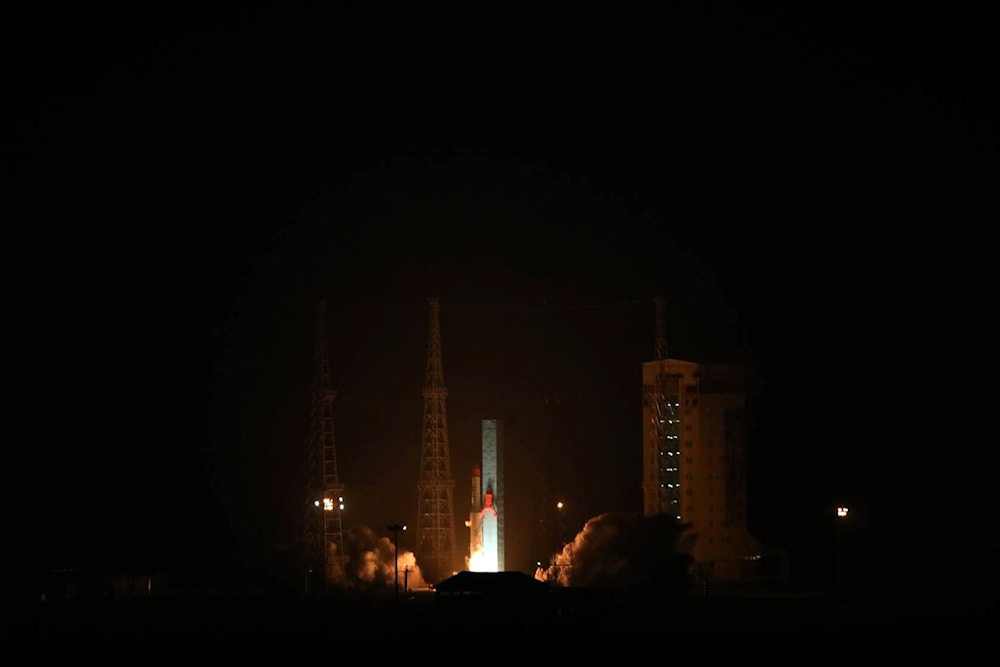Iran launches three new satellites into orbit
The satellites, Mahda, Keyhan-2, and Hatef-1, were propelled into space by the Simorgh (Phoenix) launch vehicle, manufactured by the Iranian Defense Ministry.
-

This photo released by the Iranian Defense Ministry on Sunday, January 28, 2024, shows the launching of Simorgh, or "Phoenix," satellite carrier at the Imam Khomeini Spaceport in Iran's Semnan province. (AP)
In a significant technological achievement, Iran has successfully launched three domestically developed satellites into orbit, marking another milestone in the country's space program.
The satellites, Mahda, Keyhan-2, and Hatef-1, were propelled into space by the Simorgh (Phoenix) launch vehicle, manufactured by the Iranian Defense Ministry.
The launch took place on Sunday from the Imam Khomeini Space Launch Terminal in Semnan Province. The satellites achieved a minimum altitude of 450 kilometers and a maximum of 1,100 kilometers above sea level.
Mahda, a research satellite weighing 32 kilograms, was designed, manufactured, assembled, and tested at the Iranian Space Research Center.
The primary objective of Mahda is to assess the performance of the Simorgh launcher in multiple injections of space cargo at low altitudes. It will also evaluate new designs and the reliability of indigenous technologies in space.
Keyhan-2 and Hatef-1 nanosatellites, both weighing less than 10 kilograms, were developed by Iran Electronics Industries, a state-owned subsidiary of the Defense Ministry.
Keyhan-2, designed for space-based positioning, is equipped with status determination and control subsystems to aim stably and precisely toward the Earth. Hatef-1 aims to prove the use of narrowband communication technology in the Internet of Things (IoT).
This is not only a major step toward boosting the country's military capabilities, but is also a manifestation of Iran's efforts in combatting the unilateral sanctions imposed by the US after it withdrew from the nuclear deal aimed at reducing Tehran's nuclear activity and offering the Islamic Republic sanction relief.
An underdog
Iran began its space program in the early 2000s, building its own satellite launcher based on the Shahab-4 surface-to-air missile. The Semnan launch pad in the country's north was built in 2009.
Due to high costs, Iran's space program was suspended between 2015 and 2017. Two civilian test launches failed in 2019, but the Iranian military successfully launched two satellites into orbit in 2020 and March 2022.
The country is now ranked among the top 10 nations globally with the capability to develop and launch satellites.
Last week, the Aerospace Force of Iran's Islamic Revolution Guards Corps (IRGC) achieved another successful launch, placing the Soraya satellite into orbit using the Qaem 100 satellite carrier.
Issa Zarepour, Iran's Telecoms Minister, highlighted the significance of the recent launch, stating that for the first time, Simorgh simultaneously put Mahda satellite and two other research payloads into orbit, with Mahda's signal successfully received.
"I congratulate this important achievement to the beloved people and space experts, especially my colleagues at the Iranian Space Research Center and the Defense Ministry," he noted.

 3 Min Read
3 Min Read








